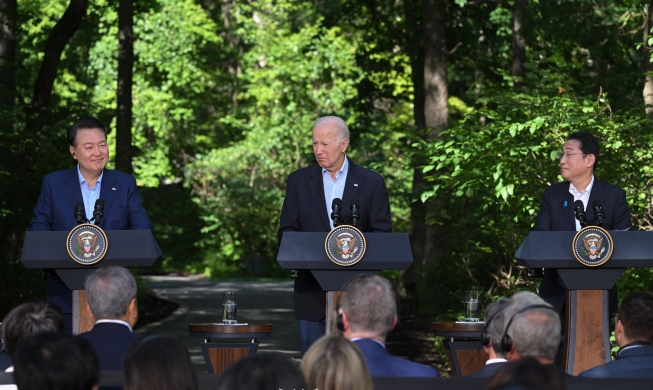- 한국어
- English
- 日本語
- 中文
- العربية
- Español
- Français
- Deutsch
- Pусский
- Tiếng Việt
- Indonesian
By Honorary Reporter Marla Josephine Arbach from Canada
Photos = Marla Josephine Arbach
My family has had a large garden in our backyard since before I was born, where my father cultivates many fruits and vegetables that grow well in the Canadian climate. Because I started cooking Korean dishes regularly, I asked him in spring if we could try growing Asian vegetables, especially those hard to find at nearby grocery stores.
He said, "Let's try." So we ordered seeds from two nearby companies that specialize in distributing Asian seeds to Canadian gardeners. From spring this year, we planted them and waited to see what would grow.
Our first success was with kimchi cabbage, which sprouted within a few days of planting. For a while, it looked like a collection of loose leaves but began to form heads of the traditional shape. I made vegetarian kimchi with this cabbage and used it in many other dishes. It is delicious to eat lightly sauteed with garlic or with a bit of mushroom or vegetarian oyster sauce.
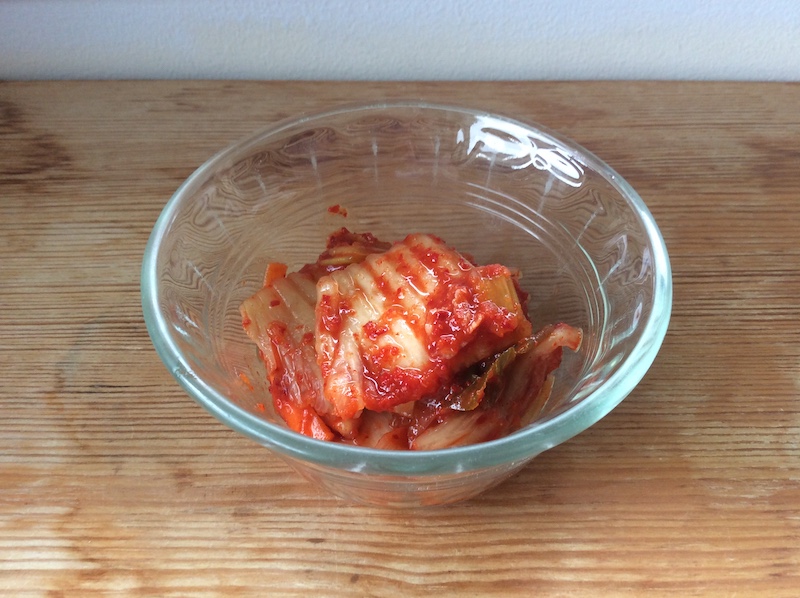
This is vegetarian kimchi made with cabbage from our garden.
We saw relative success with chonggak (ponytail) radish, a small type usually grown to make chonggak kimchi. Because we had to cut out impurities and ended up separating the stems from the roots, I decided against making this kimchi. I treated it as regular radish instead, using part of it for kimchi and adding the greens to soups and stews. I hope to grow these again next year to make chonggak kimchi.
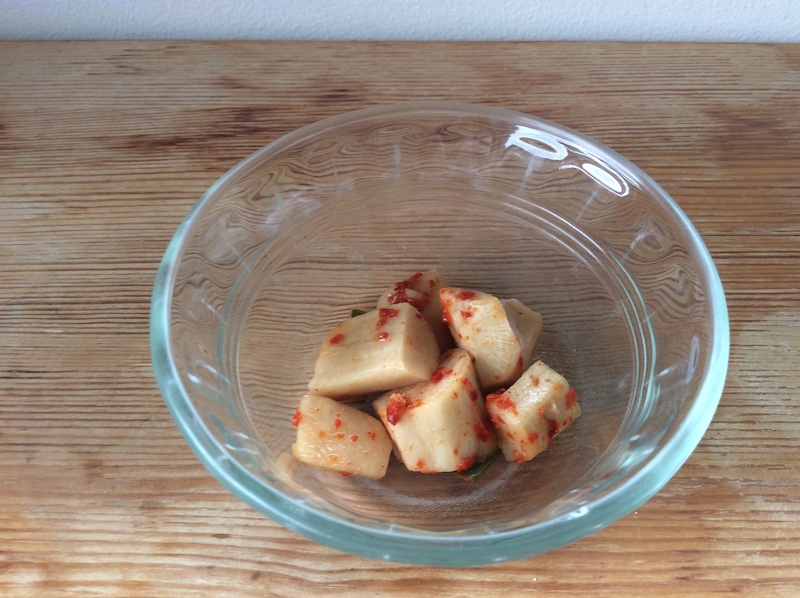
This is rough kkakdugi-style kimchi made with the chonggak radishes from our garden.
I love eggplant but the thin, long and medium purple variety is harder to find at stores here, so I was excited to put some in our garden. Though the plants took time to grow, the flowers eventually appeared and are now producing fruit. My favorite way to eat these is to cook them in a savory sauce and served over rice.
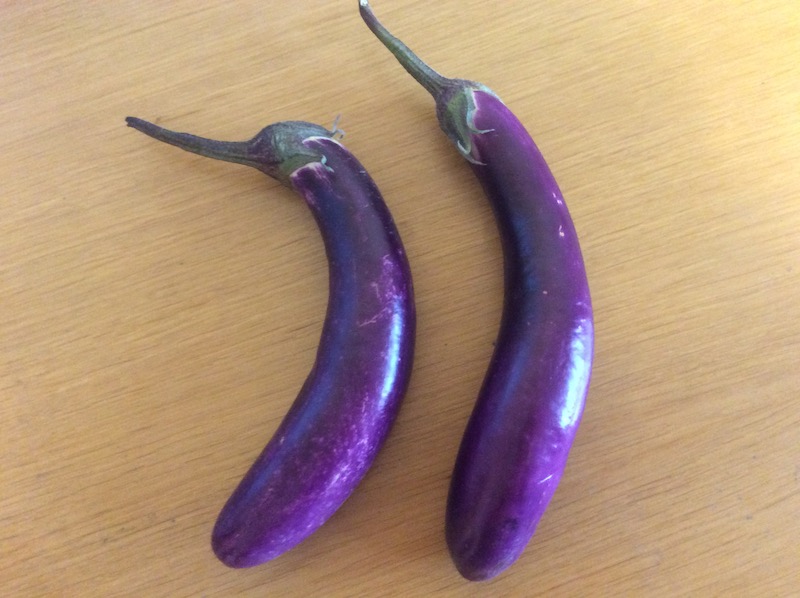
These eggplants were freshly harvested from our garden.
We also planted danhobak (squash) from seeds saved from a squash bought at a grocery store. It has produced one small squash that we ate part of steamed and used another part for gochujang jjigae (spicy red pepper paste stew). Another flower is on a vine, so I hope this will produce at least one more squash.
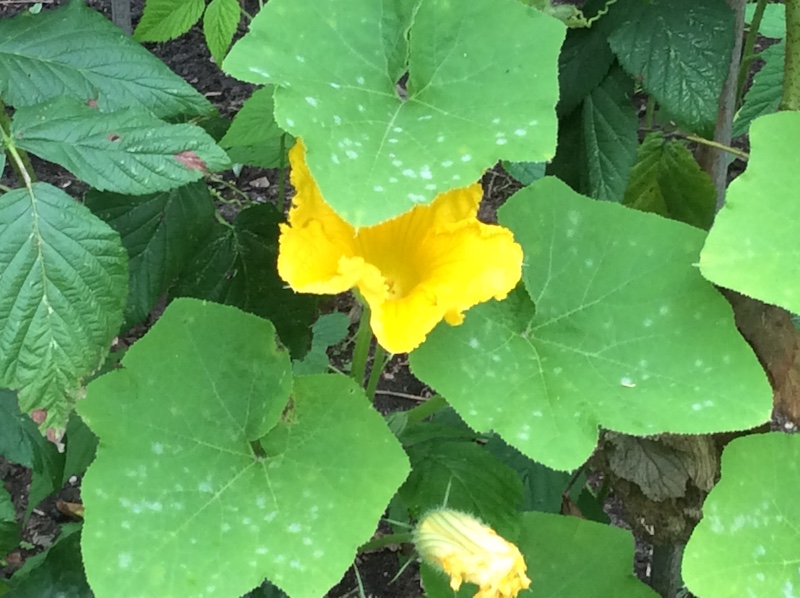
This squash plant with a flower will hopefully produce another danhobak.
We planted four types of Korean gochu (pepper). Two of them were ready to pick, a sweet green and a spicy green pepper. We marked the plants in one part of the garden but forgot to mark them in another, so I was afraid we couldn't tell the sweet and spicy peppers apart. Luckily, the spicy variety is mild, so the chance of accidentally making the food too spicy is minimal.
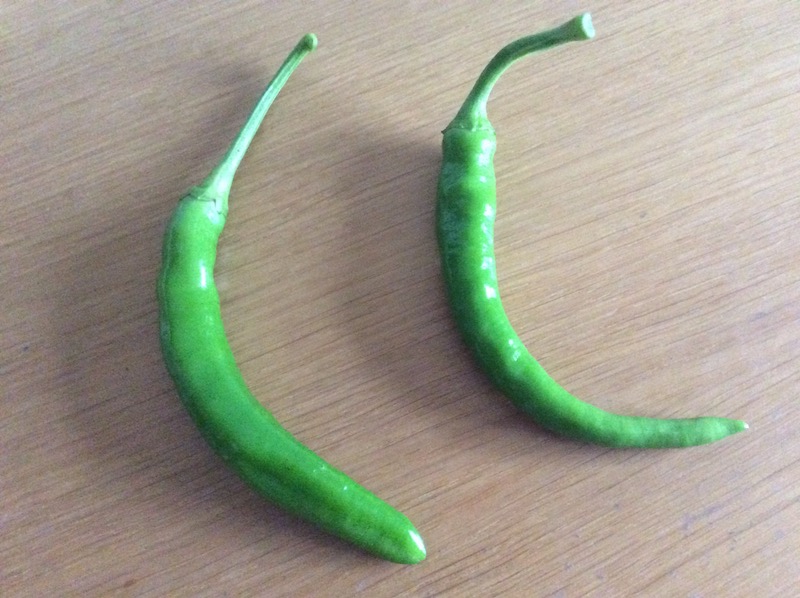
This sweet green pepper (left) and spicy green pepper (right) are from our garden.
Not everything we planted was a success, though. We planted sigeumchi (Korean spinach) and it grew well at first, but a prolonged period of hot and sunny weather in early summer killed most of the plants. I also wanted to grow doraji (balloon flower) and gondre (thistle) but they failed, too. I plan to order more seeds next year and try again. I'll follow the instructions more closely and contact the supplier for help if necessary.
I love how we incorporated my interest in Korean culture into our family's gardening tradition, and I learned from my father that his openness to trying new things goes back generations. He said that while growing up in Syria, his father was always experimenting with vegetables in his garden, alongside traditional ones. I remember my grandfather visiting us in Canada when I was little and working in the garden with my father. If he were still alive, I think my grandfather would enjoy growing these Korean vegetables in our garden.
Little time is left in Canada's short cultivation season, so please wait a few weeks for Part 2 of this article.
enny0611@korea.kr
*This article is written by a Korea.net Honorary Reporter. Our group of Honorary Reporters are from all around the world, and they share with Korea.net their love and passion for all things Korean.
